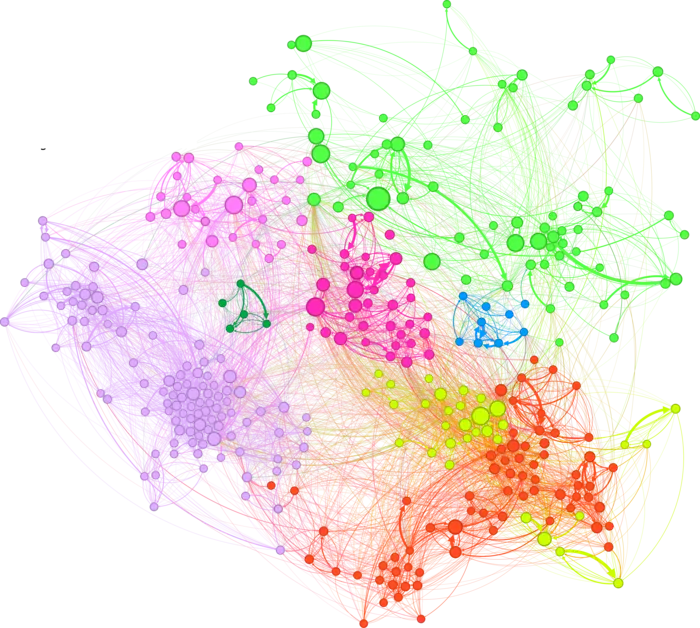The landscape of the labor market is undergoing an unprecedented transformation, driven by rapid technological advances, shifting societal needs, and evolving economic conditions. Amid this flux, a groundbreaking study by researchers Max Knicker, Karl Naumann-Woleske, and Michael Benzaquen at École Polytechnique in Paris offers a rigorous, data-driven exploration of occupational mobility within France. Published in the Journal of Statistical Mechanics: Theory and Experiment, this research leverages methodologies from statistical physics and network science to unravel the intricate web of job transitions that define modern career pathways. It confronts a critical question: How difficult is it for workers to shift from one occupation to another in today’s dynamic labor ecosystem?
At the heart of the study is a comprehensive labor market network constructed from an expansive dataset covering a decade’s worth of employment records, involving approximately 30 million workers and employers in France. This high-resolution dataset, accessed through the Secure Data Access Center and based on the BTS-Postes administrative records from INSEE, enabled the team to model the labor market as a weighted, directed network. In this network, each node represents a specific occupation, while directional links quantify transition probabilities between jobs. The graph’s topology was visualized using the OpenOrd layout algorithm and analyzed through the Gephi platform, tools well-regarded for rendering large complex networks in a meaningful spatial format.
A central contribution of this research lies in its quantification of two fundamental occupational metrics: accessibility and transferability. Accessibility measures how broadly accessible an occupation is, based on the diversity of occupations from which workers enter it. Transferability, conversely, gauges how varied the potential subsequent occupations are for workers leaving a given job. By assigning scores for these dimensions and plotting occupations in a two-dimensional metric space, the researchers reveal a distinct occupational landscape partitioned into four categorical clusters. Each cluster embodies a unique pattern of labor mobility that offers critical insights into the underlying rigidity or fluidity of the job market.
The first cluster, termed “hubs,” consists of occupations that are both highly accessible and highly transferable. These roles act as pivotal junctions in the occupational network, facilitating movement into and out of various jobs. Examples include positions like retail sellers, which demand a versatile yet non-specialized skill set, making these occupations central nodes that help sustain labor market circulation. Workers occupying hubs can navigate the market with relative agility, leveraging the position’s bridging potential.
In stark contrast, the most populous cluster identified is “condensers.” These are jobs widely accessible from diverse origins but with limited onward transitions. Caregiving roles typify this cluster – they tend to have low entry barriers but act as traps that constrain workers’ future mobility. Once inside a condenser occupation, transitioning to different roles proves challenging, which can perpetuate labor market bottlenecks and reduce workforce adaptability over time.
The study also characterizes “diffuser” occupations, which have low accessibility but high transferability. These jobs are difficult to enter due to specialized requirements but afford workers significant exit opportunities into other professions. Technical flight managers and merchant navy specialists exemplify diffusers; their roles require specific training that unlocks wide-ranging career possibilities once attained. Diffusers act as strategic launchpads for mobility but are naturally limited by high entry thresholds.
Finally, the “channel” group defines roles with limited accessibility and transferability. Such positions often demand highly specialized skills and are difficult to enter and leave. Industrial welding machine operators personify this cluster, embodying labor market segments marked by structural rigidity and potential stagnation. Channels signify occupational dead-ends that contribute to labor market inflexibility and entrenched skill barriers.
Beyond qualitative categorization, the study employs robust statistical physics techniques to analyze the stability of the occupational mobility structure over the decade-long study period. Remarkably, despite ongoing technological disruptions and socio-economic changes, the occupational transition patterns remained largely stable. This empirical steadiness suggests that the labor market operates within a constrained topology that is resistant to rapid rewiring, underlining the persistence of structural bottlenecks.
This revelation highlights the value of the study’s transferability and accessibility metrics as diagnostic tools for policymakers. By pinpointing occupations that act as bridges or barriers within the network, the framework can inform targeted interventions aimed at enhancing labor mobility, reducing skill mismatches, and improving overall employment resilience. Such evidence-based policy guidance is essential in an era where workforce agility is imperative but often elusive.
Knicker and his collaborators emphasize the descriptive nature of their current analysis, noting that predictive modeling remains a goal for future research. Their ambitious roadmap includes integrating granular vocational training data and tracking individual career trajectories longitudinally. Expanding this methodological approach beyond France to encompass other European labor markets, and possibly the entire European Union, represents a promising frontier. However, they acknowledge that data standardization and accessibility pose significant challenges to cross-country comparative studies.
This pioneering work not only advances scientific understanding of occupational mobility through an interdisciplinary lens bridging physics and economics, but it also holds profound practical implications. As labor markets worldwide grapple with rapid change, insights drawn from network science reveal hidden structural factors influencing worker mobility. Recognizing occupations as hubs, condensers, diffusers, or channels allows stakeholders to strategically focus education, training, and policy efforts where they can most effectively alleviate transition bottlenecks.
In summation, the study presents a compelling vision of labor markets as dynamic networks governed by well-defined structural properties. It reminds us that while technological progress continues to alter the employment landscape, the underlying mobility fabric exhibits enduring patterns that shape individual career pathways and aggregate economic outcomes. Navigating these constraints requires both innovative scientific approaches and informed policy design to foster a more adaptable, accessible, and equitable world of work.
Subject of Research: Not applicable
Article Title: The Structure of Occupational Mobility in France
News Publication Date: 27-May-2025
Image Credits: Max Knicker, Karl Naumann-Woleske, and Michael Benzaquen – École Polytechnique Paris
Keywords: Statistical mechanics, Network analysis, Data analysis, Human resources, Professional development, Economic development




